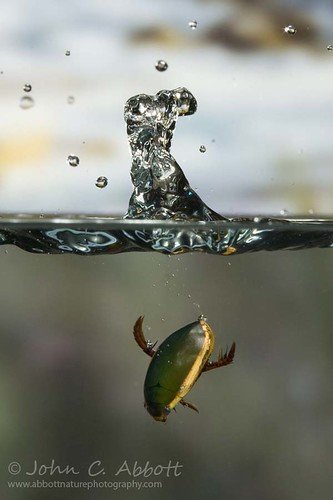



These flies belong to a large family called Phoridae or Scuttle Flies. They are parasites on many different invertebrates. These photos are of two species (Pseudacteon obtusus and P. tricupsis) attacks the Red Imported Fire Ant (Solenopsis invicta). They quickly lay an egg in the thorax of the ant, then the larva hatches and migrates to the head of the ant where it eats out the head capsule, which eventually falls off!





